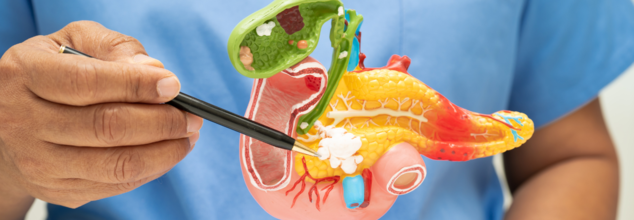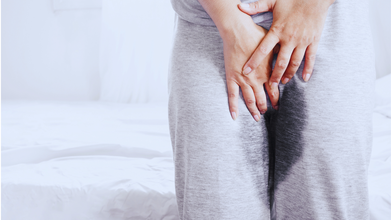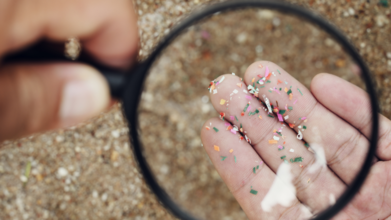- Health Conditions A-Z
- Health & Wellness
- Nutrition
- Fitness
- Health News
- Ayurveda
- Videos
- Medicine A-Z
- Parenting
- Web Stories
Look Out For These 2 Unusual Signs Of This Rare Form Of Cancer

(Credit-Canva)
Being the leading cause of death worldwide, cancer has devastated many families throughout the globe with nearly one out of six deaths being attributed it. According to the World Health Organization (WHO) the most common forms of cancer are breast (2.26 million cases), lung (2.21 million cases), colon and rectum cancer (1.93 million cases), etc. Characterized by malignant growths on a particular part of the body, this chronic condition can be caused by physical carcinogens such as ultraviolet and ionizing radiation or chemical carcinogens like tobacco or asbestos.
While one may know about the common forms of cancer, it can often affect unlikely places in our body as well. These cases, although rare, have some specific symptoms which if you know, can help you get an early diagnosis and intervention. Liver Cancer UK highlights one such type of cancer which has two distinct symptoms of this rare form of cancer: Bile duct cancer.
What is Bile Duct Cancer?
Affecting about 2000 people in the UK per year, bile duct cancer does not occur due to family history. In fact, early bile duct cancer may not even cause symptoms other than a loss of appetite, making it difficult to diagnose early. This cancer happens when the cell lining f the bile duct multiplies and grows more than it should. These bile ducts are all over the liver, connecting it to the gallbladder, small intestine and are supposed to help release bile for digestion after we eat.
Unusual Symptoms Of Bile Duct Cancer
Some of the most pivotal signs of bile duct cancer can only be seen when you use the bathroom. Two changes to watch out for are pee that is much darker or very pale, and poop that is pale and looks like putty or clay.
Both of these toilet changes can be signs of jaundice, which means your liver is under a lot of stress. When it comes to bile duct cancer, these signs might mean that the cancer has blocked the tubes connected to your liver. This blockage can cause a liquid called bile to leak into your blood and other parts of your body. Another main sign of jaundice is your skin and the whites of your eyes turning yellow, and also itchy skin.
Other Symptoms To Look Out For
Besides the changes in urine and stool, there are other signs of bile duct cancer that you must be aware of. These include losing weight without trying, feeling pain or discomfort in your belly (usually on the right side), feeling like you have the flu with fever and being tired, and also not feeling hungry. Liver Cancer UK says that these signs can also be caused by other health problems, but if you have them, you should still see your doctor to get advice. This is because if it is cancer, finding it early can make a big difference in how well treatment works.
While researchers aren’t sure why bile duct cancer happens, Liver Cancer UK says it's not always related to drinking alcohol. The charity says that it's not clear if alcohol is even linked to this type of cancer. Like many other cancers, getting older makes it more likely to happen, with most people who get it being between 50 and 70 years old
Why Women Struggle With Urinary Incontinence And How Simple Exercises Can Help

Credits: Canva
You sneeze, and instead of a polite “bless you”, your bladder loses control. A laugh turns into a dribble. A cough? Well, tissues are not the only thing getting used. If this sounds familiar, you might be experiencing urinary incontinence. Nearly half of adult women go through it at some point. And while it is often whispered about in changing rooms or ignored altogether, it is a very real, very common problem.
What’s Actually Going On Down There?
Your bladder is not misbehaving for no reason. It is more like a balloon being held in place by a hammock of muscles called the pelvic floor. When that hammock loosens due to, say, pregnancy, childbirth, menopause, or years of constipation and coughing, the balloon slips, and leaks happen.
Some days it is a few drops; other days it feels like your bladder staged a prison break. Either way, it is exhausting and, for many women, embarrassing enough to change how they socialise, work out, or even laugh freely.
Alro Read: Why a Top Gut Doctor Says Bacon Should Be Banned from Breakfast Plates
The Silent Impact
Beyond the soggy underwear situation, incontinence messes with how women feel about themselves. You might skip that morning jog, pass on road trips, or avoid wearing light-coloured trousers. Some even avoid intimacy out of fear. It is not just physical; it can nibble away at your social life and mental health too.
But you do not have to live like this. Your bladder may be out of control, but it should not control you.
Exercises Your Bladder Wants You To Do
Now for the part nobody tells you: fighting leaks can actually be oddly simple. And no, you do not need a gym membership, expensive gadgets, or chanting over herbal teas. You just need a pillow and a few minutes a day.
The Pillow Squeeze
Take a cushion, wedge it between your knees, and squeeze like you are trying to pop it (but don’t). Hold, release, repeat 10–15 times. It looks silly, but your pelvic floor will thank you.The Invisible Lift (aka Isometric Hold)
Imagine you are trying to stop urine mid-stream. That is the move. Hold for five seconds, release, and repeat. Nobody around you will even know you are doing it, which makes it the perfect exercise for office Zoom calls.
Also Read: How 60 Grams of Almonds Daily Protects DNA and Beats Stress: Study
The Glute Bridge
Lie on your back, bend your knees, feet flat on the floor, then lift your hips towards the ceiling. It works your pelvic floor, strengthens your backside, and might even make your mirror smile back at you.
Lifestyle Hacks That Actually Help
Beyond exercises, a few tiny tweaks can make a big difference:
- Coffee and wine may be your emotional support beverages, but they irritate your bladder. Cutting down helps.
- Chugging litres of water at once? Not ideal. Sip slowly through the day.
- Carrying extra weight puts extra pressure on your bladder, so shedding a few kilos can ease things up.
- Try bladder training—go to the loo on a schedule and slowly stretch out the time between visits. Basically, teach your bladder some manners.
Why We Need To Talk About It
Almost nobody talks about urinary incontinence. Women put up with it in silence, hoping it will magically fix itself. It usually does not. Breaking the silence is half the cure. The more we normalise the conversation, the quicker we get to the solutions. Urinary incontinence is beatable. Strengthen your pelvic floor, tweak your habits, and stop pretending you have to just “live with it”. You are in charge here, not your bladder.Unhealthy Weekend Habits Linked To Sleeping Disorders - Why You Health Cannot Take A Day Off

(Credit - Canva)
After long work weeks, all we look forward to is a nice weekend, whether you like spending it relaxing or spending time with your friends. People use these days to catch up on different things, whether it is their time with their families, friends or overdue work. Since you do not have the pressure to wake up for work the next day, you have the luxury of staying awake for as long as you want. However, many people think this applies to their healthy habits as well. Eating healthily throughout the week so that they can eat junk at the end of it or sleep early every day so that you can stay awake. However, the 2-day de-stressor you take could be the reason why you reset all your progress to zero, especially those who have pre-existing conditions like sleep apnea.
For many, the weekend means going into social overdrive—but a recent study suggests this can come at a cost to your health. Researchers have found that the bad habits that often go with partying, like overeating, drinking, smoking, and staying up late, can worsen a serious condition called obstructive sleep apnea.
Obstructive sleep apnea is a disorder where a person's breathing repeatedly stops and starts while they sleep. This can lead to gasping for air and loud snoring. A new study published in the American Journal of Respiratory and Critical Care Medicine which was based on data from over 70,000 people across 23 countries, found that participants were 18% more likely to have moderate to severe sleep apnea on weekends compared to weekdays. Researchers are calling this phenomenon "social apnea."
How Do Weekends Affect Sleep Apnea?
The study also found that men were at a higher risk for this "social apnea" than women, and people under 60 were more affected than those over 60. The study suggests several reasons why our weekend routines can make sleep apnea worse.
Social Jetlag
On weekends, many people sleep in later and longer, which can shift their body clock. This is similar to the effects of jet lag and can increase the risk of worse sleep apnea. In fact, sleeping an extra 45 minutes or more on weekends raised the risk of severe sleep apnea by 47%.
Alcohol and Smoking
Alcohol relaxes the throat muscles, making it easier for the airway to collapse and block breathing. It also makes it harder for the brain to wake a person up when breathing stops, so these events last longer. Smoking also makes the condition worse by causing swelling and inflammation in the airway.
Overeating
Gaining weight from overeating on the weekends can put pressure on the throat and make it harder to breathe.
REM Sleep
People often get more REM sleep on weekends, which is a deep sleep phase where throat muscles can become almost paralyzed, making the airway more likely to collapse.
Health Risks of Sleep Apnea
Sleep apnea is a serious health condition that affects at least 30 million adults in the U.S. When breathing repeatedly stops and starts during sleep, it can lead to a variety of serious health risks, including:
- Diabetes
- Strokes
- Heart attacks
- Dementia
- Depression
Can You Combat Social Apnea?
To avoid the negative effects of "social apnea" on your health, experts recommend a few simple changes like keeping a consistent sleep schedule. Try to go to bed and wake up at similar times, even on the weekends. Try to limit alcohol and avoid smoking, especially on weekends. If you use a CPAP machine or another medical device for sleep apnea, make sure to use it every night, including on the weekends.
By being mindful of your weekend habits, you can improve your breathing and overall health without needing more medical help. If you have concerns about sleep apnea, you should talk to your doctor.
This Common Component Recently Found In Glass Could Be The Reason Behind Your Inflammation

Microplastics have been a major cause of concern for many people. Not only have many people made the switch to paper straws, plates or glass bottles, but people are also changing what kind of packages enter their homes. However, was that enough? It may not have been.
Many of us assume that drinking from a glass bottle is better than a plastic one. However, a new study suggests this might not be true. The research found that some beverages in glass bottles actually have more microplastics—tiny plastic particles—than those in plastic bottles or cans. Scientists believe the caps on the glass bottles may be the main reason for this surprising finding.
Microplastics are everywhere: in our oceans, soil, air, and even our bodies. They have been linked to health problems like infertility, hormone issues, and even cancer. This study challenges the idea that glass is automatically the safest option, and highlights that seemingly small parts of packaging, like caps, can be a big source of microplastic exposure.
What Has Higher Chances Of Microplastic Exposure?
To see how different containers affect microplastic levels, French researchers tested various drinks in different types of packaging. They looked at water, soda, iced tea, lemonade, wine, and beer. The results were surprising:
Cola, Iced Tea, Lemonade, and Beer
These drinks contained significantly more microplastics when they were in glass bottles. In some cases, there were nearly 50 times more microplastics than in plastic bottles and cans.
Water
Water in glass bottles had slightly more microplastics, but it was the least contaminated drink overall, no matter the container.
Wine
Wine in cardboard "brick" cartons had more microplastics, but generally, all the wines tested had very low levels of contamination.
The study showed that the amount of microplastics a person is exposed to can vary widely depending on what they drink and what container it comes from. For example, a single liter of lemonade from a glass bottle might have over 100 microplastics, while the same amount of water from a plastic bottle might have only about 1.6.
It’s important to note that the study only tested for microplastics and not even smaller particles called nanoplastics, which might have gone undetected.
Why Are Glass Bottles Contaminated With Microplastics?
It seems strange that a glass bottle would be more contaminated than a plastic one. The researchers were surprised by their own findings, but they have a theory: the cap.
They believe the paint used on the metal caps of glass bottles may be the source. During testing, they noticed that the microplastics found in the drinks often had the same color and material as the paint on the caps. They also saw tiny scratches on many of the caps, suggesting that friction during bottling, storage, or sealing could cause the paint to flake off as microplastic particles.
When the researchers cleaned the caps, the amount of microplastics in the drinks dropped significantly. The use of a cork on most wine bottles may also explain why wine had a much lower level of contamination.
While cleaning the caps won't completely solve the problem—microplastics can also come from airborne particles, contaminated water, or factory equipment—the findings suggest that beverage companies should rethink their packaging to protect consumers.
How Do Microplastics Affect Our Health?
According to Association of American Medical Colleges although we don't have proof that microplastics harm humans, scientists are concerned. A study on mice found that even "clean" plastic particles caused negative effects. The worry is that real-world plastics contain harmful chemicals that disrupt hormones, which can affect important body functions like growth and reproduction. Experts suggest reducing plastic exposure as much as possible, especially for pregnant women and children.
How to Reduce Your Microplastic Exposure?
Given that microplastics are everywhere, it's almost impossible to avoid them completely. The study found that even bottled and tap water contain them. However, you can take steps to reduce your exposure:
- Use cups made of glass, stainless steel, or bamboo.
- Avoid putting plastic containers in the dishwasher or microwave, as heat can cause them to release microplastics into your food and drinks.
- When you buy a drink, consider switching between different types of packaging, like plastic, glass, and cans.
- The ultimate goal, experts say, is to reduce our overall dependence on packaged drinks and snacks in general.
© 2024 Bennett, Coleman & Company Limited

